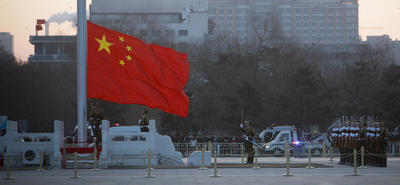Over the last few years, Hugh White has made an immensely important contribution by forcing us all to think about this question. The central issue for White is whether it is possible to construct an arrangement whereby the new powers in Asia, most prominently China, can engage with the established power, the United States, as the structure of regional power undergoes dramatic change. The answer to this question is vital to the future of regional political stability in the intrinsically unstable process of transition in the balance of regional political power.
White has argued the need to acknowledge that the economic shift to Asia has profound implications for the balance of strategic power. China is now strong enough to contest America’s leadership in Asia, and is plainly doing so. That means the old days of uncontested American primacy, and the Asian order that has been built on this foundation, are already history. Australia’s choices are about what kind of order it would like to see replace this. We also need to recognise that there are several possibilities for the kind of new order that could emerge. One is a contested order framed by strategic rivalry between the US and China. This would be risky and undesirable, but whether it might anyway be the best available option depends on the alternatives. If the only alternative is Chinese domination, then rivalry might be preferable, because no one wants to live under Chinese hegemony. But another possibility is one in which the US stays engaged in Asia to balance China’s power, but does not try to dominate Asia itself. This would be a better outcome than either of the others, if it can be achieved. That would not be easy, because the US and China would both have to agree to accommodate one another’s interests and share power. White has described the evolution of that outcome as desirably resembling the establishment of a ‘concert of powers’ in Asia and the Pacific.
This week’s lead essay, from Amitav Acharya, at Washington’s American University, takes a contrary position. ‘In Asia today’, he says, ‘there are multiple mechanisms of stability: economic interdependence raises the stakes of mutual survival and well-being; US-centred alliances preserve the balance of power; and cooperative institutions develop a habit of dialogue and thereby moderate extreme, unilateral behaviour. None of these is sufficient by itself to guarantee order, but together they create the conditions for stability’.
Archarya identifies three scenarios that have dominated the discussion of Asia’s geo-political future to date. The first, he says, suggests that China is like Germany in the late 19th and early 20th centuries and predicts a spiral of great power competition leading to a major war. Europe’s past becomes Asia’s future. The second suggests that China’s ascent can be compared with that of the US in the 19th century, when it pursued regional expansion and imposed a sphere of influence over Latin America and the Caribbean. China might seek similar coercive hegemony over Central, Southeast, and parts of South Asia. The US’s past becomes Asia’s future. The third scenario sees Asia returning to a tributary system in which China dominates as a benign hegemon, offering trade privileges and occasional security protection to its weaker neighbours. Here, Asia’s own past becomes its future.
None of these scenarios, Archarya concludes, comprehends the changes that will shape Asia’s unique geo-political future. What they ignore, he argues, is the significant changes that have taken place in Asia in recent decades. Asian security in the aftermath of World War II was shaped by three forces: economic nationalism, security bilateralism (anchored on the US’s ‘hub-and-spoke’ alliances), and political authoritarianism. Over the decades, Asia has seen a major growth in economic internationalism, multilateral institutions and democratisation.
Specifically, Acharya rejects the notion of an Asian ‘concert of powers’ to manage Asia’s geo-political transition. The Asian regional order today bears no resemblance to the 19th century Concert of Europe, he suggests. Rather an Asian concert of powers is unrealistic and dangerous. For a concert to function successfully it would require a degree of ideological convergence among the major powers. No such convergence exists pending China’s democratisation. On the other hand, a concert based on current ideological conditions would be a welcome gift to China’s authoritarian rulers, as it would preserve a conservative status quo that would arrest China’s democratisation.
Archarya’s conclusion is that great power competition in Asia will not disappear. With statesmanship and some luck, 21st century Asia can avoid the cataclysm of conflict that destroyed the European international order in the early 20th century. How much statesmanship and how much luck remains the question.
Peter Drysdale is Editor of the East Asia Forum.


War is more likely coming from Middle East. It is a pressure cooker ready to pop open.